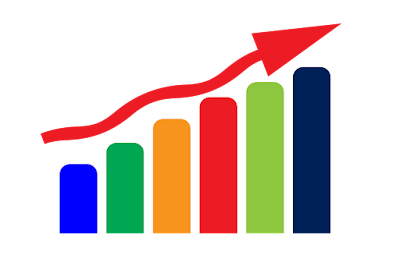
Describing trends and graphs with prepositions
Discover how to describe trends in graphs using prepositions correctly!
Examples
There has been an increase in the number of people aged over thirty. [ ✓ ]
There has been an increase of the number of people aged over thirty. [ ✗ ]
Between 1990 and 2000, there was a drop 15%. [ ✗ ]
Between 1990 and 2000, there was a drop of 15%. [ ✓ ]
We can express a specific trend or change using a noun + in + a noun phrase describing what has changed:
a(n) plunge / dip / reduction / plummet / surge / hike / drop, etc. in something
Describing Trends in Graphs Examples
- There has been a significant plunge in the stock market.
- The data reveals a noteworthy dip in customer satisfaction.
When we talk about a change, growth, improvement, trend, variation, or any similar concept, we use the phrase "in "something"".
Examples
- We have seen notable improvements in health services.
- There is evidence of substantial changes in people's lifestyles.
We can express a change or the outcome of a change by using a noun + of + a number that represents the extent of the change.
Examples
- There was an increase of 50 points in the stock market index.
- The company reported a drop of $1 million in revenue.
- We witnessed a rise of 10 degrees Celsius in temperature.
The phrases below allow us to quantify and describe changes in a concise and precise manner. They provide specific information about the extent of the change and help us understand the impact of certain factors or actions.
an upper / lower / maximum / overall / etc. + level / amount / figure
Example
- Demand reached an upper level of 47,000 in early March.
a high / low / maximum / total / peak, etc. + value / quantity / measurement
- Usage experienced a low quantity of 30,000 in the first week of January.
a large / small / maximum / entire / highest, etc. + count / total / number
- Sales recorded a large total of 10,000 during the holiday season.
an elevated / diminished / maximum / overall / etc. + figure / total / amount
- Attendance reached an overall figure of 5,000 at the conference.
a tall / short / maximum / total / peak, etc. + sum / quantity / measurement
- Profits reached a peak sum of $100,000 in the fourth quarter.
How to Describe a Graph
Describing a graph with precision requires a specific set of phrases and functional language.
- Trends Over Time: Use phrases like "increased significantly", "rose gradually", "remained steady", "experienced a downturn", or "fell sharply" to describe how values change over time.
- Starting Points: Begin your explanation with phrases like "The graph shows that", "As we can see from the graph", or "The graph illustrates".
- Describing Highs and Lows: Use phrases like "reached a peak", "hit a low point", "plummeted to its lowest", or "soared to its highest".
- Comparing Data: Utilize phrases such as "in comparison to", "compared with", "relative to", or "is greater/lesser than" for comparisons.
- Frequency and Distribution: Use terms like "most common", "least common", "the majority of", or "a small number of" to describe frequency and distribution.
Remember, these phrases not only help in accurately describing graphs but also add a professional tone to your academic writing.